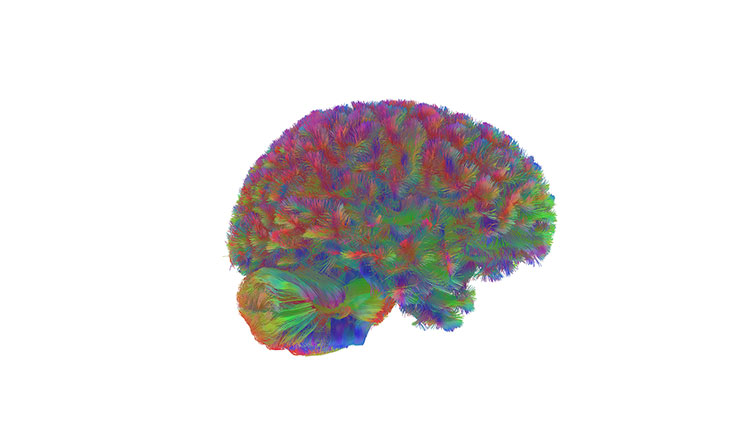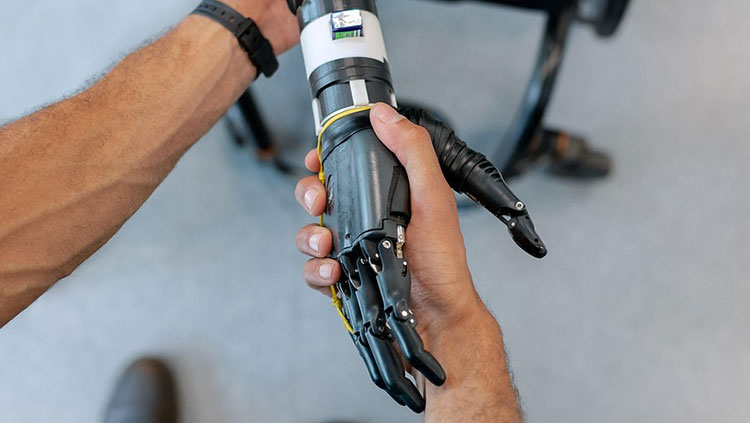ICYMI: This Laser Can Make Your Eyes Perceive a Never-Before-Seen Color
- Published15 May 2025
- Author Bella Isaacs-Thomas
- Source BrainFacts/SfN

A new laser-powered device hijacks the human eye’s color-perceiving cells, allowing its operators to alter what their subjects see. Researchers at the University of California, Berkeley, used the technology — dubbed “Oz” in a nod to The Wizard of Oz’s technicolor world — to temporarily reprogram five people’s photoreceptors, which led them to perceive a completely novel color. They detailed their work in Science Advances.
Colors are visible to us thanks to the interplay between the light illuminating our world and millions of light-sensitive cells populating our retinas. People with typical color vision have three distinct sets of these cells, called cones, dedicated to the three swaths of the visible light spectrum. S cones take in shorter, bluer wavelengths, M cones take in medium, greener wavelengths, and L cones take in longer, more red wavelengths. Our brains translate the information they detect into the rainbow of colors we see.
In the natural world, no existing wave of visible light can exclusively stimulate M cones. So, the researchers used Oz’s laser to do just that. The study participants said the resulting color was unlike anything they’d seen before. They described it as a “blue-green of unprecedented saturation.” Rather than manipulating the participants’ whole field of vision, the laser worked on just a fraction of cells, resulting in a small visible square of the new color, “olo.”
Big Picture: People with color blindness often only have two sets of fully functioning cones, which means they take in two portions of the visible light spectrum rather than three. The researchers behind Oz hope to eventually use the technology to create a third line of color which could briefly expand the visual range of people with color blindness. It’s not yet clear, however, whether or how a brain which had never previously received this visual information would interpret it, co-author and Berkeley professor of electrical engineering and computer science Ren Ng told Nature.
Read More: This Impossible New Color Is So Rare That Only Five People Have Seen It. Scientific American
More Top Stories
- Researchers mapped a tiny sliver of a mouse’s brain in unprecedented detail to study how neurons work. The Guardian
- Environmental factors shaping early childhood experiences affect the structural quality of white matter in the brain and, by extension, kids’ cognitive abilities. Science
- People over 50 who spend more time using technologies like smartphones are less likely to experience cognitive impairment. New Scientist
- A specific group of neurons in the amygdala activate following an experience akin to food poisoning in mice, offering clues as to why we experience aversion to foods that made us sick in the past. Science News
- In female mice — but not males — estrogen and progesterone can instruct immune cells to release a painkilling, endogenous opioid after experiencing a nerve injury. Live Science
- Human brain cells engineered to dodge immune system detection restored muscle control in rats with Parkinson’s-like symptoms. Nature
- A new study suggests individual neurons can follow separate rules to modify plasticity in real time to strengthen or weaken synapses. Technology Networks
- People with lower levels of LDL cholesterol may have a reduced risk of developing dementia. BBC Science Focus
CONTENT PROVIDED BY
BrainFacts/SfN
References
Also In Neuroscience in the News
Trending
Popular articles on BrainFacts.org


.jpg)






.jpg)









